
|
 |

|
 |
Piyal Bhattacharya: I believe in totality - Vijay Shanker e-mail: vijaydance@gmail.com Photos courtesy: Piyal Bhattacharya April 21, 2024 Kolkata based Piyal Bhattacharya is the recipient of the Sangeet Natak Akademi award for his unique and outstanding contribution in the field of classical dance and Sanskrit theatre. After extensive research, Piyal has introduced Marga Natya based on the Natyashastra that explores the music and dance attributes of Geetam, Sangeetam, Vadyam, Nrityam and Natyam with the underlying philosophy of reaching out to the supreme, through the interaction of jivatma with paramatma. After formal training in Kathakali, being inspired by Dr Padma Subrahmanyam, Piyal studied the Natyashastra and introduced Marga Natya and choreographed dance dramas with the usage of vachika abhinaya and varied other aspects of the performance technique to combine entertainment and education with a spiritual and holistic approach. In an exclusive interview, Piyal Bhattacharya explains the significance of Marga Natya, Sanskrit theatre, characterisation and the usage of some rare musical instruments to enhance the artistic and aesthetic sensibility of the performance and much more. What induced you to do research and introduce Marga Natya, based on the Natyashastra? As it is known, Dr. Padma Subrahmanyam is the pioneer in the research of applied Natyashastra who first brought forward Bharata's prescription of 108 Karanas as stated in the Tandava Lakshana Chapter. I was mesmerized by her performance at the Swarna Samaroh of 1997. It is this performance that inspired me to pursue Performing Arts seriously. After a very fulfilling seven years of training at Kalamandalam, Kerala, it was Dr. Subrahmanyam's research that propelled me to get to the roots. During my training in Kathakali Theatre, I discovered many Sanskrit Naataka-s, which were based on the doctrine of Natyashastra as informed by my Guru-s. My quest was to reach this foundation of knowledge. The discipline, ethics, and ethos of my training at Kalamandalam have worked as the primary resource behind my attempt to revive Naatya of these Sanskrit Naataka-s based on Bharata's principle. For this I first started studying Sanskrit and its theories intensely. Also, a thorough knowledge of Indian worldviews was instrumental in my pursuit. 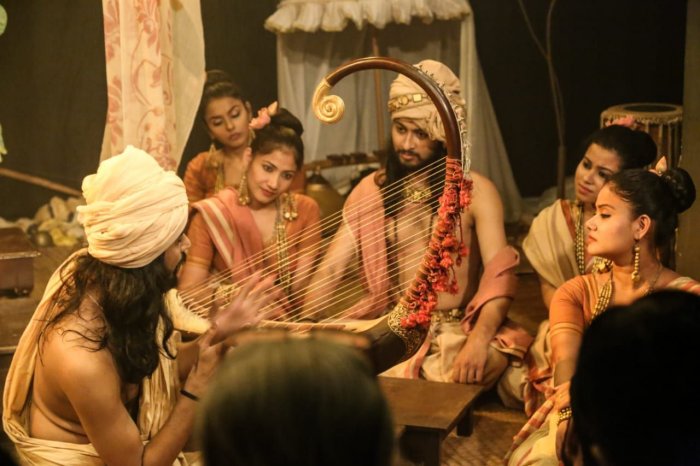 Tandava Lakshana Chapter was the first chapter with which I started my journey in this research reconstruction. My reconstruction is based on the scriptures rather than the sculptures. After the reconstruction of dance, I attempted to reconstruct Bharata's music. While in my study of musicology, I discovered Mattakokila Vina as the prime string instrument that facilitates the creation of melody through Jaati-Gaayen. As Mattakokila Vina (Indian Harp) had no living tradition in practice, with the financial support from Sangeet Natak Akademi in the form of Intangible Cultural Heritage fellowship, I travelled to Burma to understand and reconstruct Mattakokila Vina from the living tradition of Saung Gauk (Burmese Harp) to understand the playing technique of the harp as Mattakokila Vina got migrated to this country as a part of trade and cultural relations centuries back. Now, I was inspired to view the whole painting where Bharata's dance, music, instruments, abhinaya came into being. It is at this juncture I was motivated to reconstruct Sanskrit Naatya based on Bharata's principle as stated in Natyashastra. Why have you used the word Marga? Do you follow any particular Margam as described in the Natyashastra? 'Marga' is a Sanskrit word that demarcates the wisdom which came down through Parampara and Sampradaaya. 'Marga' also means 'to search', 'to find'. Natyashastra states the transcendental emanation of Naatyaveda from Brahma where Shiva combined activity in the form of dance, which Vishnu materializes making it comprehensible for Nandikeshwar to learn and practice. This knowledge further flows down to Bharata from the transcendental beings, which later gets systematized into knowledge that facilitates the audio-visual form of Naatya. It is this flow, this wisdom that is being termed as 'Marga'. Natyashastra states this journey/path of universal creation as 'Marga'. This is the reason I have used the word 'Marga' with Natya to denote the path shown by Bharata to us. 'Marga Paddhati' is the process, which is implied and exemplified by Bharata through the documentation of a 'theory of prayoga (praxis)' in Natyashastra. Along with my students, I am also walking this path towards the ultimate truth that will ultimately take us to bliss, or Moksha following the Shastra for the Nata-s/Nati-s. 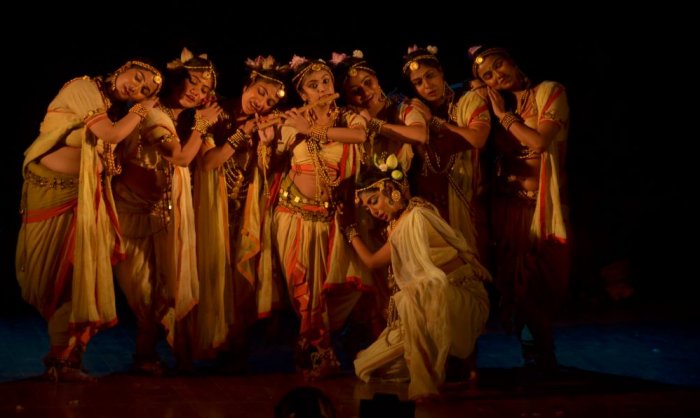 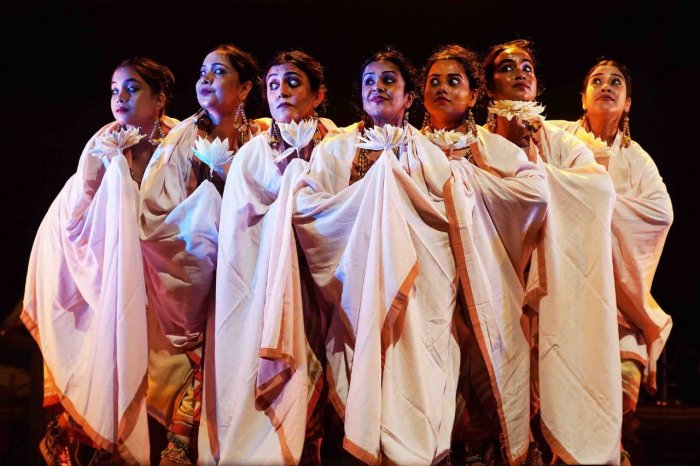 I believe Marga Natya is a fine combination of Geetam, Sangeetham, Vadyam, Nrityam and Natyam. Please elaborate on this and how different it is from the ideology of Dr Padma Subrahmanyam that is based on the 108 Natya Karanas. First, this is a very controversial question. My Youtube Channel will give you a clear idea about this. As per Natyashastra, when Bharata presented Naatya in front of Shiva, he suggested that Karana, as employed by him during the annihilation of his own creation, ought to be employed to make this Naatya more engaging and tempting. Basically, it is implied that Bharata's Naatya previously lacked Alankara-s/ornamentation, which was fulfilled by the application of Karana. Hence, Karana-s are a tool that was applied within Naatya for the purpose of ornamentation (as a part of its outer space and time) on the plane of human physicality. On the inside, this Karana creates the inner space and time through its kriya-s, which reverberates through the physicality of the practitioner as Angadhvani. Bharata documented the transcendental knowledge of Naatyaveda, which was aimed at facilitating the journey of the Nata-s as well as the spectators from the micro to the macro, from the gross to the subtle, from the outer to the inner space. As a part of human existence, the physical body has its own gross/outer/materialistic space and time. Along with this we also have an intangible/metaphysical inner space and time that becomes the ground where we connect with the transcendence or the Supreme-self, the source of all Universal Creation. Kapila Vatsyayan while explaining Sattwikaabhinaya has mentioned this inner space and time that Bharata has implied through the training, practice, and manifestation of Sattwikavasta of the self. Sattwa not only denotes the mind but the highly contemplative state of the mind that is in Samaadhi. This is the state of the inner space stated by Bharata in Natyashastra. Hence, the training, practice and discipline of Marga Natya is aimed towards the attainment of this highly contemplative inner space and time that helps in the journey towards the subtle from the gross. In other words, Marga Natya is not just a form of dance or any other Performing Arts that needs any effort to be established as one of the classical forms of Art but it is a process by which any art practitioner is trained through the medium of Performing Arts based on Bharata's principle to journey towards the subtle form along with the upliftment of the collective consciousness of the spectators / Samajika-s, also. My research is based on this foundation. 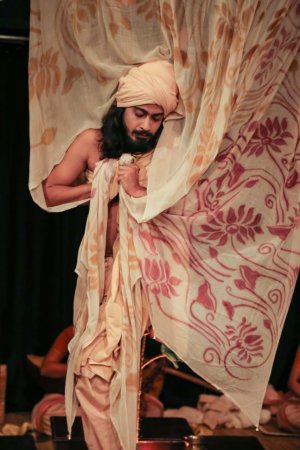 How different is Marga Natya from Bharatanatyam or any other classical dance? I think I have already explained this in the previous question. My approach is not aimed at defining another classical form of dance but to adhere by Bharata's principle to journey towards the state of a highly contemplative mind, which is aware through the practice of Performing Arts. You have used Vachikabhinaya and Sanskrit recitations in your productions. What is the choreography process, does it differ according to the theme or music? Sanskrit as language has many layers of meaning. These layers are Abidhaa, Lakshana and Vyanjana. Abidha is the meaning that is understood directly, Lakshana is the second layer that provides the implied meaning and Vyanjana is the third layer that radiates the suggestive reverberations. The purpose of the choreography is to emit the suggestive reverberation of the subject matter/ Naatya. How different are your productions from traditional Sanskrit theatre? 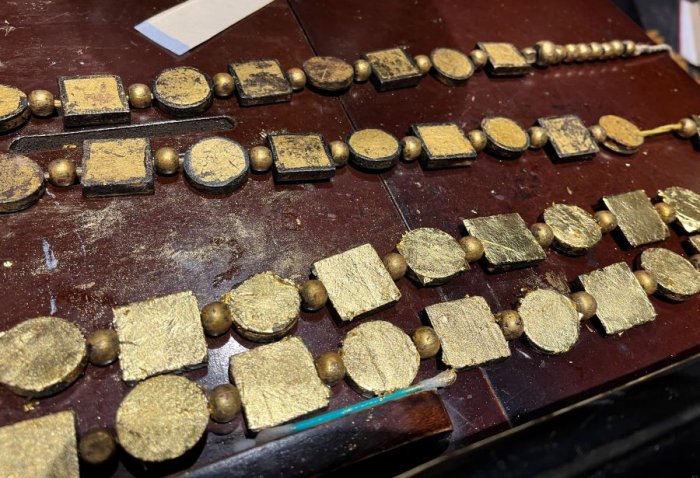 There are very few traditional Sanskrit theatre that are surviving today. And the Sanskrit theatre that are being performed are based on modern principles without any foundation of tradition. Sanskrit theatre is not just a theatre where the dialogues are in Sanskrit language. Traditional Sanskrit theatre has the eternal flowing worldview embedded within its practice as its foundation. Hence, all its parts like the music, costumes, jewellery, props, instruments are based on that. Here, in Marga Natya, principles are based on the Natyashastra-ic tradition. The music, instruments are all reconstructed based on the directions of Bharata. Whether it is Mattakokila Vina, which was a part of Intangible Cultural Heritage project, where I was funded by Sangeet Natak Akademi in 2014, reconstructed from Burma's Buddhist Harp Saung Gauk or the literature of the music is even sourced from Shastra-s that are later developed for the purpose of traditional artistic pursuit. For example, the opening music for Samvatsar Kathaa was sourced from Pushti Margiya Sangeet sung in Dhrupad style. Even the Aharya is based on this principle. The jewelleries are made up of wooden beads with 24 carat gold foil design. Earlier these foils were sourced from Burma but now it is sourced from Ahmedabad. The foils are applied on the wooden beads following the process of covering instruments with gold foil in Burma. Have you incorporated any changes in order to enhance theatrical appeal in your presentation? I have not incorporated any changes because this is based on scriptural research. Even though scripture within the Indian worldview system is considered to be fluid, my approach is based on Shastra-ic tradition. It is not based on my conditioning or my whims. 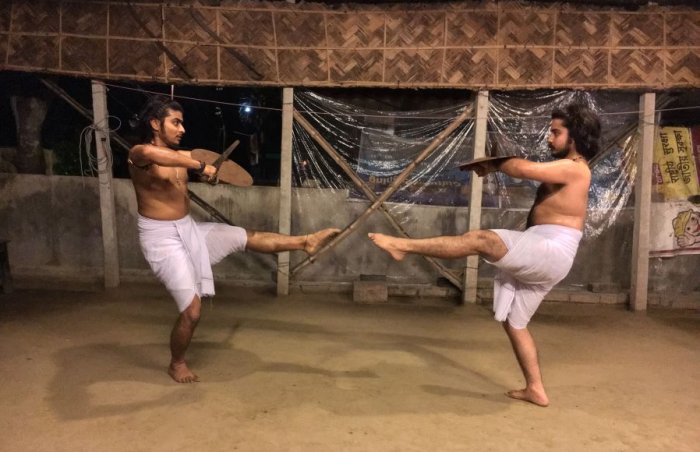 'Samvatsar' which was presented in Mumbai explored the evolution of man and also related to the seasons. In one of the scenes, the dancers are seen draped in cloth and their faces are not revealed and they continue to dance and move. Can you throw some light on the significance of this scene? To correct you, it was an exploration of the evolution of man and woman within the canvas of the changing Seasons. There are two places within the Natya where the dancers' faces are covered. First, during the Monsoon season the dancers while playing Shri Khol were covered under a large flowing cloth to depict the thundering clouds. They came as the consort of Megharaaj. The second instance is during the season, Autumn (Sharat) where dancers cover their face to present themselves as Kaash Phool (Kans Grass native to Asian countries), found during the season of autumn, one of the important signifier of the season. 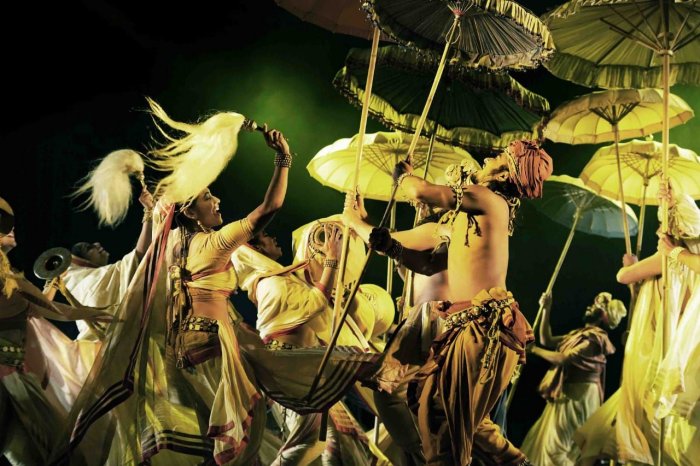 You have also used some rare musical instruments. Please elaborate on the instruments with focus on its significance and why it is used in particular scenes. Mattakokila Vina, 21 Stringed Indian Harp, which is central to Bharata's music system. Natyashastra prescribes Mattakokila Vina as the one that will be used to play Jaati-s of Bharata's music. These Jaati-s are skeleton forms of Raaga-s of Indian classical music. This instrument is employed to introduce the Raaga-s of specific seasons like that of Summer (Grishma), Monsoon, Autumn. Another rare instrument is the Dhrupadi Rabaab, which is a medieval instrument developed after 12th century C.E. This instrument is employed to add colours specifically during the season of Monsoon. This instrument has Gut strings that help to create a soundscape that suggests the feeling of being drenched in water. When did you first present Marga Natya? What was the response? It was first presented in the year 2011 by Bickram Ghosh. The response was a mixture of awe and skepticism. This is because the audience could not make out any meaning as they have never heard or seen any form of this sort. They were awed by the training that was reflected in the skill of the performer and the soundscape created by Bharat's music as they have never heard of anything like this. So, it was a totally new audio-visual form in Performing Arts. How different is traditional Sanskrit theatre from contemporary dance productions? Traditional Theatre is totally different from Contemporary dance productions. Traditional practice is based on customs that are being practiced over centuries, which later got crystallized into tradition. Customs can be equated with the word 'Parampara'. It is an 'uninterrupted series', 'one following the other', 'successive', 'repeated', etc. The word 'tradition' can be equated with 'sampradaya'. It means traditional knowledge, traditional handing down of instruction, system of religious teaching, etc. A theatrical practice based on such principles is known as Traditional Theatre. Contemporary dance productions are based on the creator's thought process. 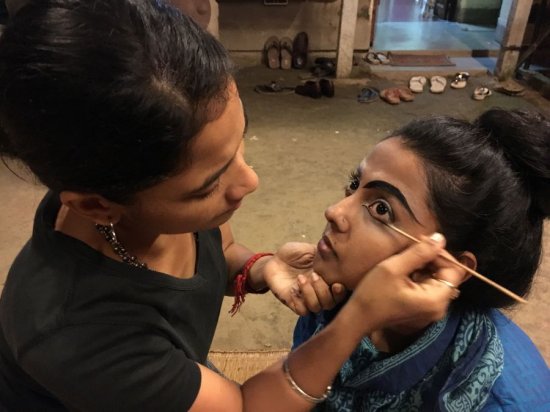 Which aspects of performance do you give more importance and why? I believe in totality. I feel it is these parts that make one whole performance. It is not only a question of angik, vaachik or aharya but stage design, light design, scenography, props everything that makes one performance come alive. Your future plans or aspirations? I have recently reconstructed Jarjara puja as a part of Sudhha Purvaranga as prescribed by Bharata. It was performed on 30th of March 2024 at Gyan Manch, Kolkata by my Shastra Guru Rakesh Das, before the performance Jimuta Hridayam, an adaptation of Nagananda by Sri Harshadeva. I am reconstructing smriti and tantra part of Bharata's principle. 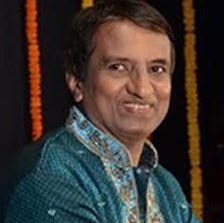 Vijay Shankar is a Kuchipudi and Kathakali exponent, teacher, bilingual journalist, arts critic and actor. Post your comments Please provide your name and email id when you use the Anonymous / blog profiles to post a comment. All appropriate comments posted with name and email id in the blog will be featured in the site. |